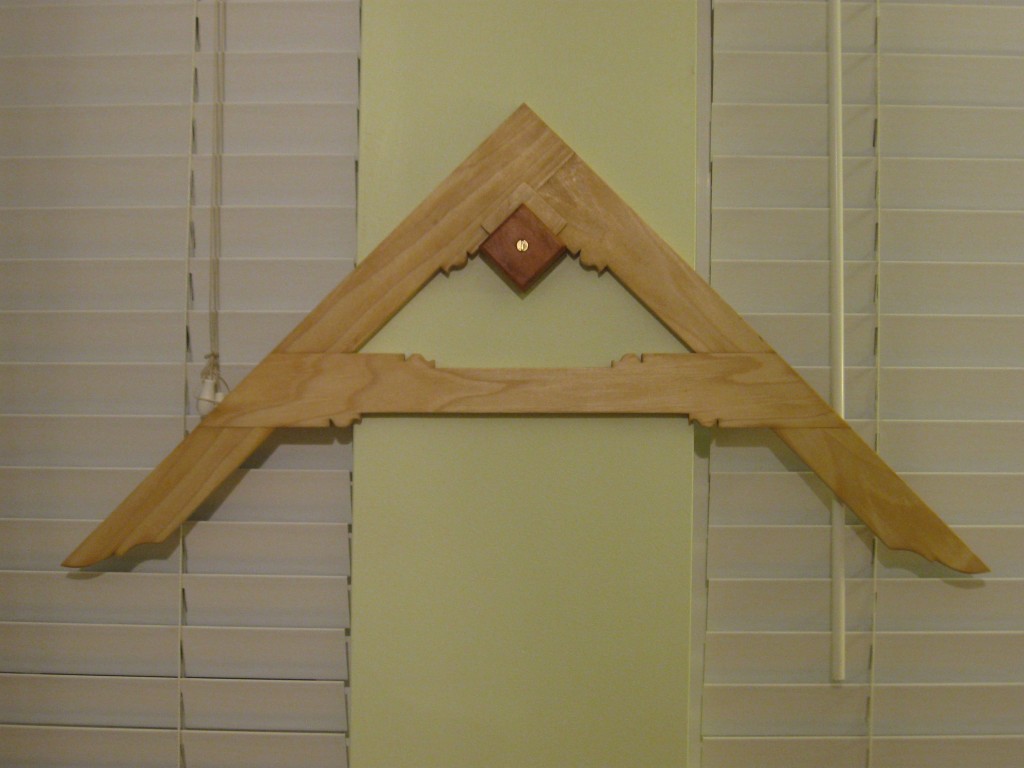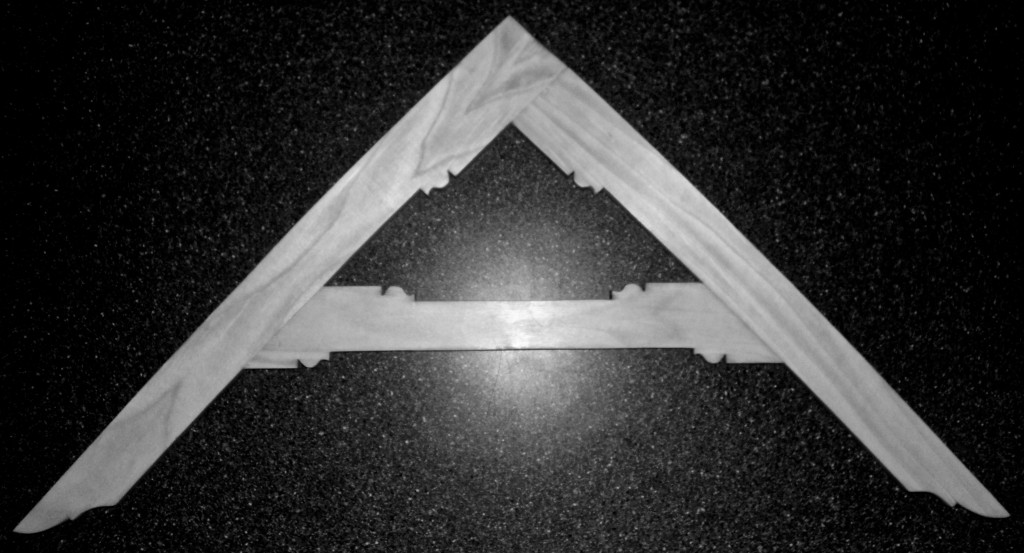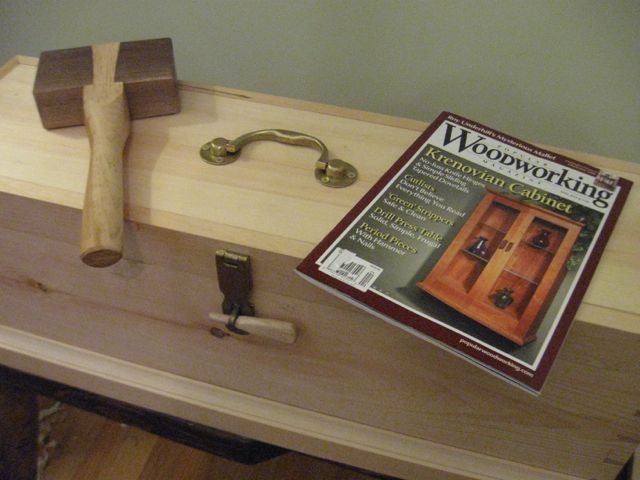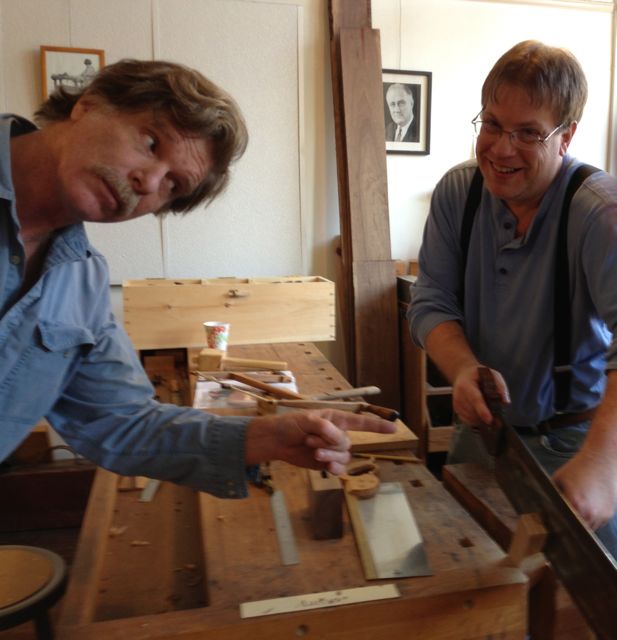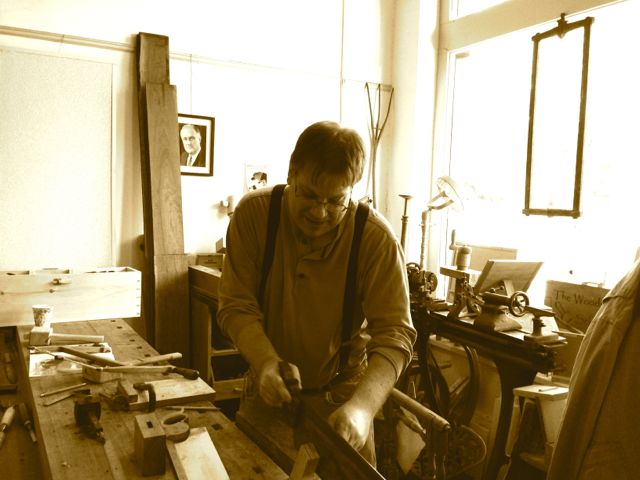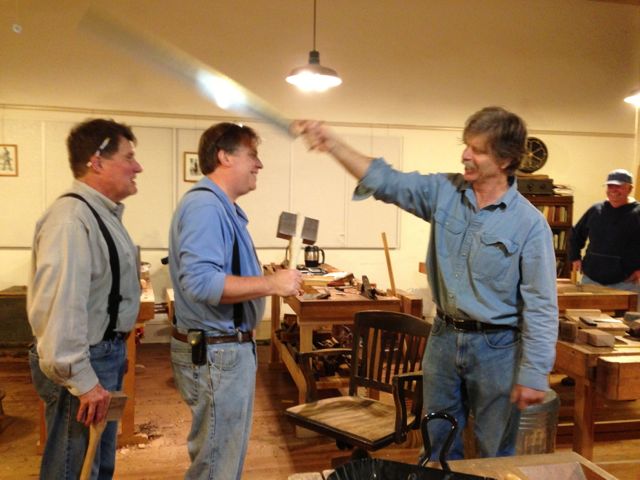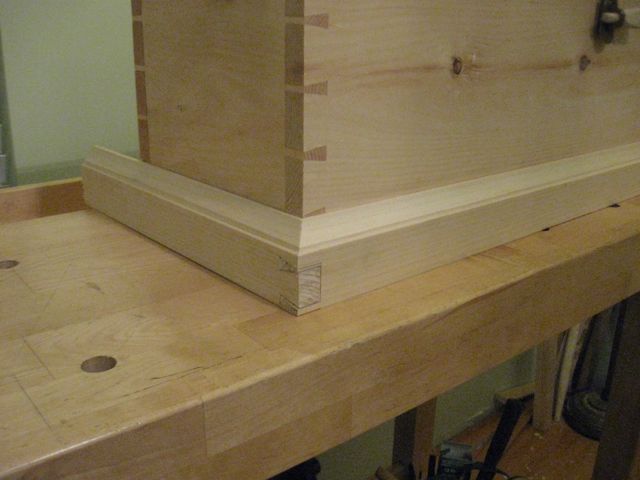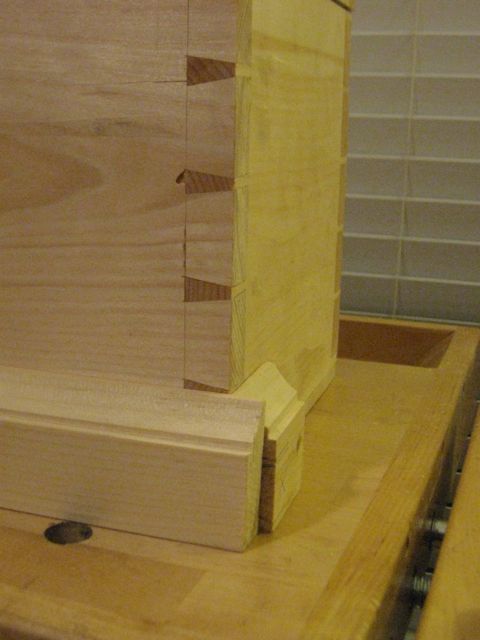I hope you had a nice Holiday! I sure did. I got a chance to spend some quality time in the shop the last few days. This English Layout Square is a project I have been meaning to take on for some time, but just never got around to it. After seeing the re-run of the Woodwright’s Shop online where Roy and Chris built this, I had to make one too; it looked like too much fun to pass up.
I stopped by Home Depot for some errands and decided to get a 1/2″ piece of poplar to do this English Layout Square. I knew it would not take long to build and would be a fun project.
This project was also published in the December 2010 issue of Popular Woodworking, and there is a free Sketchup drawing available as well. That is what I used as a reference and I was able print out the nice curves, and transferred them to templates which I made out of some scrap maple.
It took me two days to complete the square and another day to tune and apply the finish (boiled linseed oil and paste wax topcoat). I also took the time, while the linseed oil was drying, to make the holder out of some cherry and scrap poplar; it really accents the square and keeps it secure on the wall.
This may look like an easy project, but it did challenge my budding skills. First, I had to make some pretty accurate cuts on the half lap joints. Then, clean them up with the router plane…I love the router plane; it makes flattening cheeks on a half lap possible. I also got to use my shoulder plane to true the shoulders and really make a clean joint. I also had to cut out the areas between the horizontal stretcher with a saw and chisel – this is harder than it seems. The final challenge was the half laps on the legs. You cannot just saw these out. I used a saw to cut 3/4 of the way and used a chisel to remove the bulk of the waste and then switched to the router plane once again to flatten it out.
After all that cutting and fitting, my joints were flat and tight. I am really pleased with this square and hope to get many years of use out of it.
Here is a picture of the square out of the holder.
I spent s little more of my Holiday thinking about future projects. For a Christmas present to myself, I bought John Alexander’s “Make a chair from a Tree” DVD video how-to, and I also bought a used copy of the book which is out of print (real pricey) second edition book by the same title, originally published in 1994. I am inspired to make some chairs from newly dead trees and start a whole new aspect of my woodworking journey.
Here is another book I own that was also authored by Alexander, as well as Peter Follansbee, titled “Make a Joint Stool from a Tree.” For the project in this book, I will need to complete my lathe first in order to make the legs…but it is on my to-do list.
-Aaron

